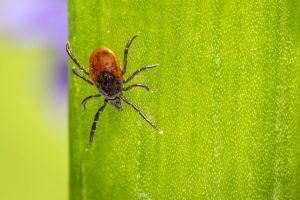
Crimean-Congo haemorrhagic fever (CCHF) is a viral infection spread by ticks that is found in many countries throughout Africa, the Middle East, and Asia. The disease causes severe symptoms, including fever, headaches, muscle aches, and bleeding, and has a high mortality rate, with some outbreaks resulting in fatalities of up to 40%.
Traditionally, CCHF has been most commonly found in low-income countries with poor healthcare infrastructure, where it is often spread through contact with infected livestock. However, there are several reasons why the virus could become more common in richer countries in the future.
One important factor is globalization. With increased travel and trade between countries, infected ticks and animals carrying the virus can easily be transported across borders. This was seen in 2018, when a man in Spain contracted CCHF after being bitten by a tick that had likely been brought over from an endemic area in Africa.
Climate change is another factor that could contribute to the spread of CCHF. As temperatures rise, the geographic range of the ticks that carry the virus may expand, allowing them to thrive in new regions. This was seen in the Crimean Peninsula in the 1990s, where a warming climate allowed for the emergence of the CCHF virus in previously unaffected areas.
The increasing popularity of outdoor activities such as hiking and camping in countries where CCHF is present could also contribute to the virus’s spread. As more people venture into areas where infected ticks are present, the likelihood of transmission increases.
While CCHF has traditionally been associated with low-income countries, there are several reasons why the virus could become more common in richer countries in the future. Globalization, climate change, and outdoor activities all contribute to the potential spread of the disease, emphasizing the need for continued surveillance and prevention efforts worldwide.
The following are five ways to address CCHF:
1. Infection control measures: Strict infection control measures should be implemented in healthcare settings to prevent the spread of the virus. Quarantine measures, isolation of infected patients, and use of personal protective equipment (PPE) by healthcare workers are some examples of infection control measures.
2. Antiviral treatment: There is no specific antiviral treatment for Crimean-Congo haemorrhagic fever, but supportive treatment can be given to manage the symptoms. Ribavirin, an antiviral medication, has shown some benefits in treating patients, but its effectiveness is not yet confirmed.
3. Vaccination: Currently, there is no available vaccine for Crimean-Congo haemorrhagic fever. However, research is ongoing to develop a vaccine against the virus.
4. Public awareness: Public awareness campaigns can help inform people of the risks of the disease and measures to prevent its spread. Education on avoiding contact with ticks and enhancing hygiene practices can be useful measures to reduce the incidence of the disease.
5. Surveillance and monitoring: Public health authorities need to closely monitor the incidence of Crimean-Congo haemorrhagic fever to detect cases early and implement control measures. Early detection and treatment can save lives and prevent the spread of the disease.


Very interesting info!Perfect just what I was searching
for!Expand blog
Your point of view caught my eye and was very interesting. Thanks. I have a question for you.